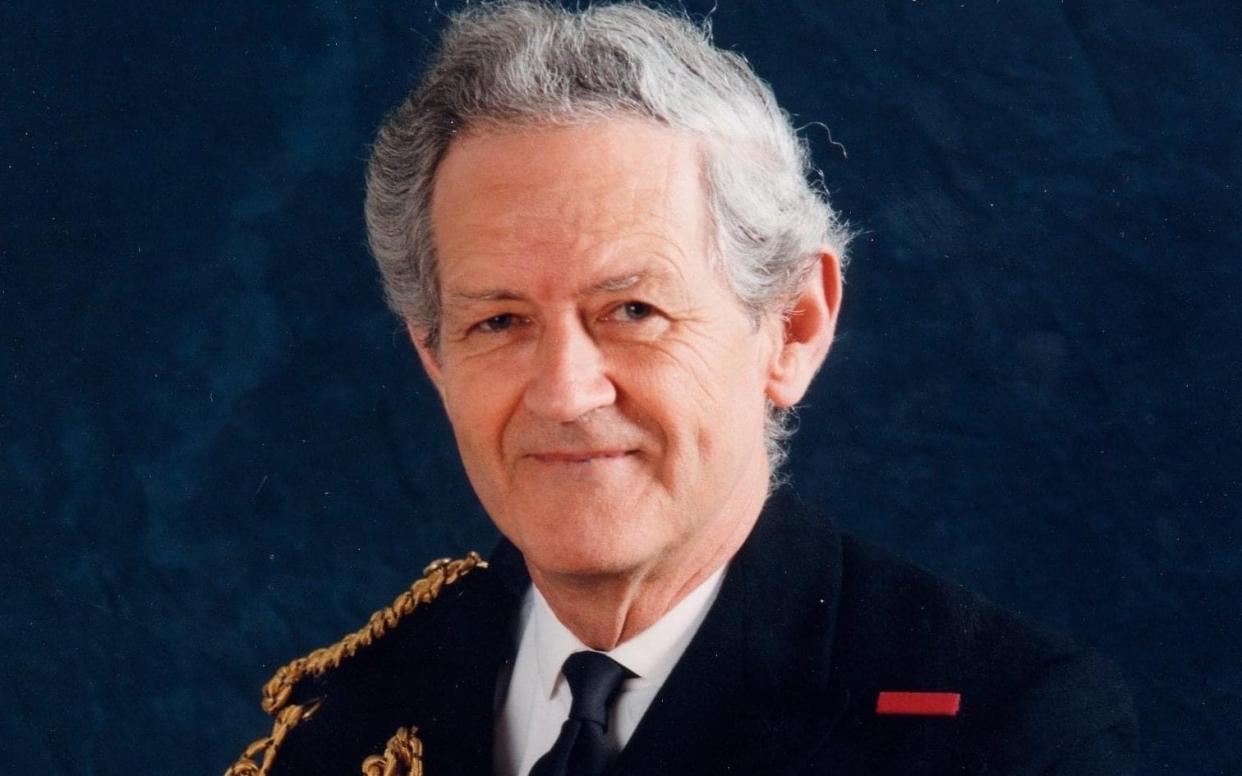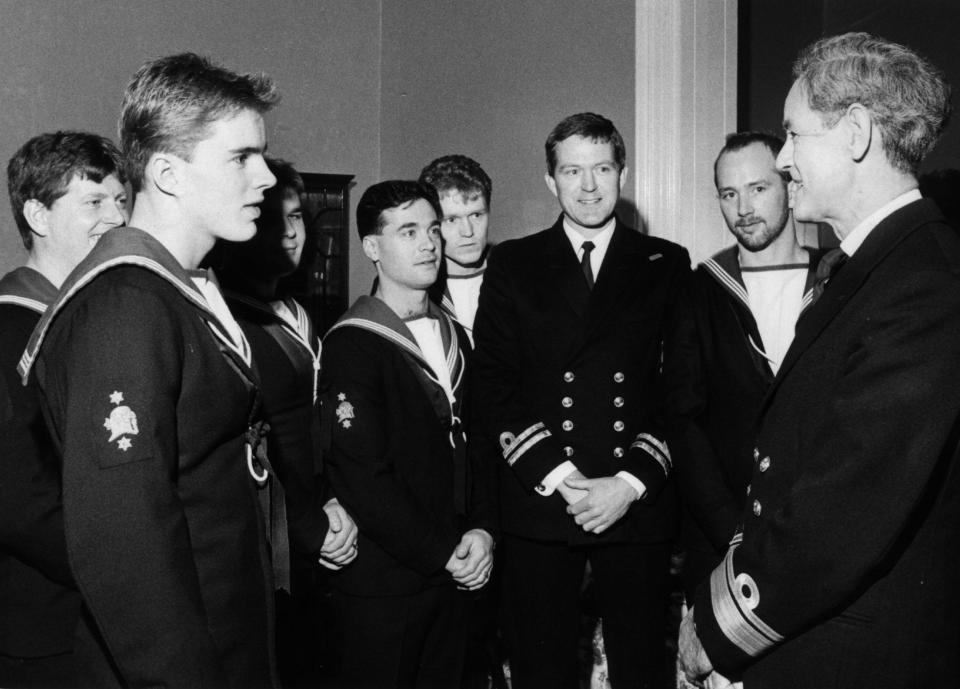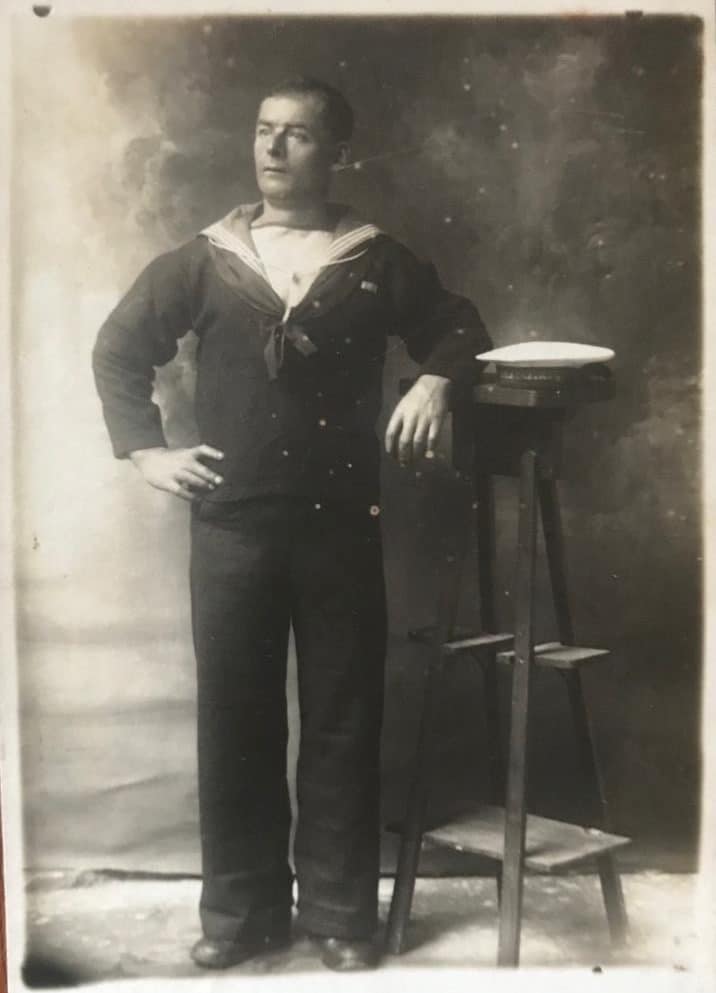Admiral Sir Kenneth Eaton, Controller of the Navy who advised on procurement of ships and weapons – obituary

Admiral Sir Ken Eaton, who has died aged 87, was Controller of the Navy – and was always in demand for his organisational, administrative and innovative skills.
Eaton’s five years, from 1989 to 1994, as Controller of the Navy (formerly Third Sea Lord and Controller of the Navy, a post with origins in the 16th century, responsible for shipbuilding and weapons acquisition) were challenging. As the holder of the 500-year-old office, he was a member of the Navy Board, but under successive Ministry of Defence reorganisations control over the Navy’s materiel programme was passing to the Chief of Defence Procurement (CDP).
Eaton proved a loyal and steady member of the Navy Board – where his quiet, sensible and unemotional advice was invaluable – while discharging his responsibilities to the CDP over ships and weapons.
One of his immediate challenges was the so-called “trouser leg” problem, caused by corrosion of a weld of two pipes (they resembled trouser legs) in the PWR1 reactors that drove all the Navy’s nuclear-powered submarines. Inspecting and rectifying the problem deep inside the reactor of each submarine was compared by one observer to “wallpapering a hallway through the letterbox of a front door”, but Eaton oversaw the start of an effective repair programme using a small robot developed by Rolls-Royce.
A different concern was the need to obtain an effective and affordable air defence system for the fleet, after the losses to Exocets during the Falklands War. A new US missile was likely to be effective but costly, while a European weapon might be little more than a point-defence system (point defence being the defence of a single object or limited area).

Pro-European politics won the day, but the UK was late in joining the French and Italians in their project. Eaton, however, though never particularly comfortable in a multi-national environment, commanded so much respect among his peers on the continent that he persuaded them to upgrade the missile and the radar which now constitute Sea Viper, a highly effective local area defence system, in the Daring-class destroyers.
Another preoccupation was the introduction into service of the Vanguard-class ballistic missile submarines, or SSBNs, and the Trident missile system. Eaton successfully oversaw the programme and witnessed the first UK test-firing of a Trident missile, on a US range, early in 1994, ensuring that the SSBN Vanguard began her first patrol as planned in November 1994.
Kenneth John Eaton was born on August 12 1934 in Plymouth to John and May Eaton; his father was senior surgery attendant at Sheerness dockyard. Ken was educated at Borden Grammar School, Sittingbourne, and in 1953 entered the Navy as a Special Entry Cadet (Electrical Branch).
His training consisted of two terms at Dartmouth and a term in the cadet training cruiser, followed by three years at Fitzwilliam College, Cambridge. After practical courses at the shore establishment HMS Collingwood, and a year in industry, Eaton spent another year, still under training, in the destroyer Cavalier in the Far East.
His first appointment was as flight-deck electrical officer in the carrier Victorious, 1959-61, but he soon become involved in the Navy’s burgeoning air-direction and action information organisation (the Navy was a world leader in the integration of communications, radar, sonar and fire-control). In 1965 he returned to sea as action information engineer in the carrier Eagle.

Eaton became one of the Navy’s experts in computerisation, and between appointments to the Admiralty Surface Weapons Establishment he also set to work the Action Data Automated Weapons System Mk 2 (ADAWS-2) which controlled the new anti-aircraft and anti-submarine missile weapons in the destroyer Bristol, building at Swan Hunter on the Tyne.
Promoted to commander in 1971, Eaton served at the Defence Communications Network Headquarters at RAF Medenham, and as weapons electrical officer in the carrier Ark Royal, 1976–78. He worked in the MoD in London and Bath before being promoted to Rear-Admiral and Flag Officer, Portsmouth, and Naval Base Commander, 1987–89, and to Vice-Admiral and Controller of the Navy in 1989.
After he had left the Navy, Private Eye voiced uncertainty when Eaton, who lacked any background in health care, became chairman of Guy’s and St Thomas’ NHS Hospital Trust (1995–99), referring to him as the “Fat Controller”: this upset Lady Eaton, who exclaimed: “He’s never been fat!”
But Eaton’s objectivity, relentless probing of opinions, and search for data, enabled his board – whom he won over after their unhappy experience under a previous chairman – to implement some necessary but unwelcome changes. Still, he thought he could have achieved more, once venting his frustration: “If only these doctors would crow together, we might get somewhere.”
Among other chairmanships, such as the National Remote Sensing Centre, 1995-2001, and the UKAEA, 1996-2002, Eaton took the helm as chairman of the Mary Rose Trust in 2001.
The fortunes of the naval attractions in Portsmouth were at a low ebb, and the finances of the Trust were so dire that the trustees were discussing abandoning the project, with some threatening to tow the hull out to sea and sink it. Eaton imparted new energy and self-belief in his colleagues, brought new people on-board and, working out much of the detail himself, drove forward a bid to the Heritage Lottery Fund.
While the costly specialised conservation of the hull and artefacts continued, he appointed architects to design a novel building and ramped up fund-raising efforts, his leadership being key to the opening of a new museum in 2013 to international acclaim.
Eaton became chairman of the Society for Nautical Research in 2011, having chaired a working party tasked with examining the way ahead for the society. Major changes took in its website and social media presence, and the election of fellows, while he encouraged the society in its long-term relationships with the National Maritime Museum, Greenwich – which it had helped to found in 1937 – and the National Maritime Museum of the Royal Navy in Portsmouth.
Under Eaton’s chairmanship, the Save the Victory Fund, which the society has administered since 1922, provided a large grant towards a new gallery in Portsmouth, and he was sure-footed in his handling of the delicate situation that developed over the status of the society’s then president, Prince Andrew.
Although Eaton was an inclusive and consultative chairman, the impatience and decisiveness of the former senior naval officer sometimes showed through, as when he once confided to a fellow member of council: “It’s just like Kissinger said, the academics are so vicious because the stakes are so small.” On another occasion he closed a lengthy debate in council by exclaiming: “I don’t want any more ideas, I want action!”
Eaton did not neglect local affairs, and was chairman of the Warnford Village Meeting and the Winchester Science Centre & Planetarium. He took up watercolours and went on many painting holidays, and loved opera, supporting the Wessex Glyndebourne Association, West Green Opera and Grange Festival Opera.
He was knighted KCB in 1990 and GBE in 1994, and was ceremonial Rear Admiral of the United Kingdom (an honour awarded by the Queen), 2001-07, but he always kept a picture on his desk of a Victorian stoker: this, he explained, was his grandfather, George Eaton, and he did not want to forget where he came from, or how far he had come in life.
Ken Eaton married Sheena Buttle in 1959; she survives him with their daughter and two sons.
Admiral Sir Ken Eaton, born August 12 1934, died July 20 2022

 Yahoo News
Yahoo News 
